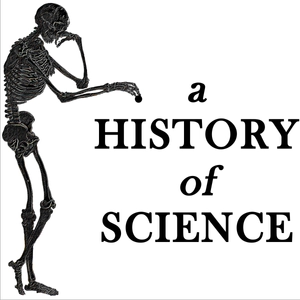
In the 16th century, great advances were made in anatomy. Amazingly, this didn’t lead to a single improvement in surgery, which remained crude, cruel, and lethal.
Wootton, David
Bad Medicine Book
2007, ISBN: 9780199212798.
@book{Wootton2007,title = {Bad Medicine},
author = {David Wootton},
url = {http://www.badmedicine.co.uk},
isbn = {9780199212798},
year = {2007},
date = {2007-11-01},
keywords = {},
pubstate = {published},
tppubtype = {book}
}
Vesalius, Andreas
De humani corporis fabrica Online
1543.
@online{Vesalius1543,title = {De humani corporis fabrica},
author = {Andreas Vesalius},
url = {https://commons.m.wikimedia.org/wiki/Category:De_humani_corporis_fabrica_1543
},
year = {1543},
date = {1543-01-01},
keywords = {},
pubstate = {published},
tppubtype = {online}
}
Are you as intrigued by the skeleton in this show’s logo as I am? Probably not. It does have its place in the history of science, though. It’s a five hundred years old drawing that comes out of the first modern anatomy book ever written. It has had people mesmerized by it ever since.
Nowadays, the writer of the book, the Fleming Andreas Vesalius, is hailed as a revolutionary proto-scientist and the founder of modern anatomy. And while those claims are not exaggerated, there is one thing Vesalius’ book did not have any impact on: medical practice.
His exquisitely detailed drawings of the human body did not shed doubt on the ancient practice of bloodletting, nor did they stop anyone from trepanning skulls as a treatment for insanity. They didn’t even improve amputations, Cesarean sections, or any other type of common surgery.
Hello and welcome to A History of Science: Episode 4: Between Skin and Bones.
Introduction
The Scientific Revolution saw an unprecedented increase in knowledge in a wide range of subjects, from physics to astronomy to biology. By 1650, anatomists had dissected our bodies and learned the purpose of most of its organs; physicians had fiercely debated William Harvey’s theory of blood circulation – and relented to his evidence; physicists had viewed the makeup of our tissue through their microscopes, and had seen the tiny organisms that lived on it with their own eyes.
All was in place for a medical revolution. But nothing happened.
For centuries to come, the constantly increasing understanding of nature and anatomy did not change medical practice one bit. Until the late nineteenth century, doctors still relied on Hippocrates for their diagnoses and their cures. Why?
Now that’s a complex question to answer. One that can be approached from many different angles, involving an array of interesting characters and events. It is a question worth coming back to time and again, and we certainly will.
In this episode, we will explore this question from the perspective of surgery: why didn’t it change with advances in anatomy? And why was real progress – when it happened – so slow to spread? Especially, we will dive into the stories of two pioneers who made important discoveries in the very same decade, yet who never met: Andreas Vesalius and Ambroise Paré.
Andreas Vesalius and Dissection
In 1538, Andreas Vesalius stole a corpse. In the dead of night, he sneaked to the field of gallows in his hometown of Brussels. There, the tortured corpses of executed criminals were left to rot in gibbets, until nature devoured them. Vesalius cut down one of the unfortunate men’s corpses, cut it into smaller chunks, and took it home. There, he boiled the limbs one by one, until the flesh fell off and only the blackened bones remained. He then set himself to the task of painstakingly reassembling the body, bone by bone. When he was done, he had created the first anatomical skeleton since antiquity. It would make him world famous – and unpopular with his neighbors, no doubt.
Vesalius had to operate in secrecy, as the dissection of corpses was outlawed virtually everywhe...
07/13/17 • 23 min
Episode Comments
0.0
out of 5
No ratings yet
eg., What part of this podcast did you like? Ask a question to the host or other listeners...
Post
Generate a badge
Get a badge for your website that links back to this episode
<a href="https://goodpods.com/podcasts/a-history-of-science-6426/%e2%91%a3-between-skin-and-boneson-surgerys-discord-with-anatomy-238451"> <img src="https://storage.googleapis.com/goodpods-images-bucket/badges/generic-badge-1.svg" alt="listen to ④ between skin and bones▪on surgery’s discord with anatomy on goodpods" style="width: 225px" /> </a>
Copy